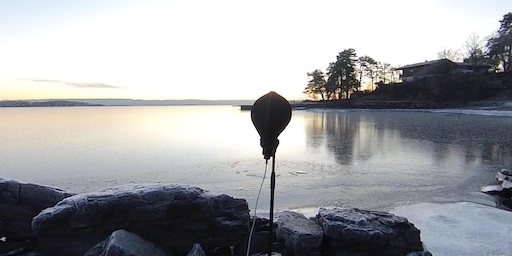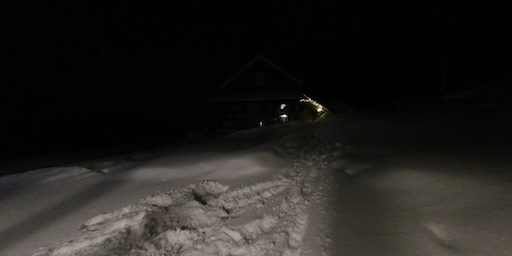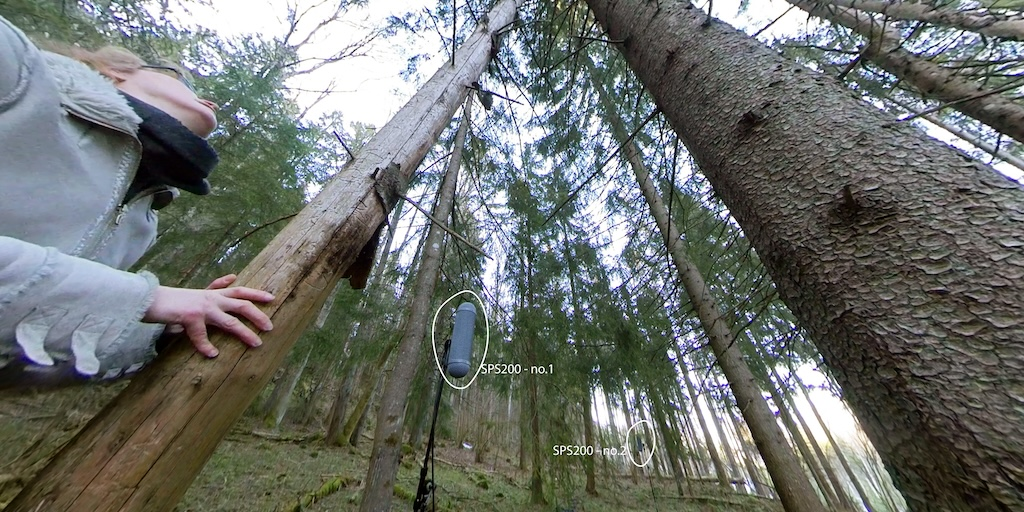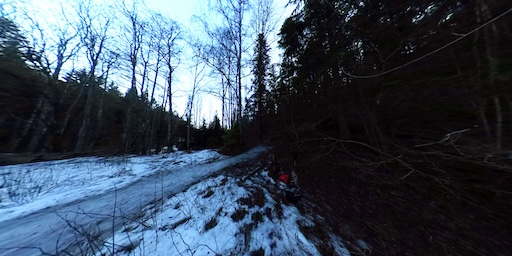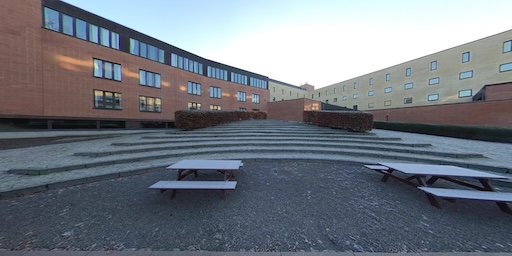The soundscape comprises subtle transformations of an EigenMike recording captured at Holmenskjæret / Devikbukta, Holmen (Norway) on December 27, 2019. Sources are extracted from the EigenMike recordings using beamforming techniques and then enhanced to amplify their natural qualities. The transformed sounds are subsequently encoded in ambisonics and positioned to align with the original recording. The bay is covered with a layer of ice. Around halfway through, you experience the remarkable acoustics of early morning as a man shouts in the distance, a boat motor resonates across the water, and waves roll into the shore, cracking the ice and creating a pushing and sucking sound underneath the icy surface.
Location: Holmenskjæret / Devikbukta, Holmen, Asker. Norway.
Recorded: 27th December 2019
Composed: January 2020
Format: HOA (4th order and 7th order 3D)
Eigenmike on loan from IRCAM
In this landscape sound development I have used three EigenMike source recordings from Fyresdal (Norway): Wind in the trees (outdoors, recorded from a porch with windchimes), horses and a donkey (in a stable), and chickens (inside a small chicken coop). Sounds are extracted from the recordings, processed and reassembled. I was particularly interested in the morphology of the sounds and the contrasts of spatial expanse and spatial intimacy. To enhance the real soundscape further I add some studio recorded sounds of similar spectral-temporal profile.
Location: Solheim, Fyresdal. Norway.
Recorded: 3rd January 2020
Composed: February-March 2020
Format: HOA (4th order and 7th order 3D)
Eigenmike on loan from IRCAM
With the EigenMike returned to its owners, I conducted a recording test using a double Soundfield SPS200 (first-order ambisonics microphones) in the local forest. Similar to other Landscape Studies in this series, the initial few minutes are characterized by minimal activity, so I encourage you to relax and allow the events to gradually unfold. The recording was made at the end of the first week of Norway's COVID-19 shutdown, and the local environment displayed an unusual quietness. Typically, one would hear a continuous noise from the nearby main road and the frequent overhead planes. The forest area is a protected nature reserve, allowing trees to naturally die and fall within safety measures.
Throughout the years, I have recorded numerous instances of squeaky trees, and on this occasion, I explored the area to locate one tree with a particularly distinct squeak. Other noteworthy sounds include that of a woodpecker and runners with shoe spikes. One SPS200 microphone is positioned beside the squeaky tree, while another is placed further away (the SPS200 closest to the camera). The recordings from the two microphones were subsequently selectively mixed.
The conclusion of this sound landscape development shows the most extreme compositional transformations that I have employed thus far in these studies.
Location: Hvalstad Forest
Recorded: 20th March 2020
Composed: 28th March 2020
Format: HOA (1st order HOA)
This study is made from two local recordings: one made at the end of 2019, one made in the beginning of 2020. The 2019 recording was made in -8 degrees and wind. The 2020 recording was made when the temperature was edging up to zero and causing ice droplets to fall from the pine trees. These ice droplets became a feature of the study. After transcoding the Eigenmike recording into HOA, I then set up multiple directional sound beams pointing towards the ground which captured the hit of the ice droplets fairly well. A little more post-processing made them even more prominent. Towards the end, a distant dog barking highlights the acoustic of the forest.
Location: Hvalstad Forest
Recorded: Dec 2019 / Jan 2020
Composed: 29th March 2020
Format: HOA (4th order and 7th order 3D)
Eigenmike on loan from IRCAM
As with the other Landscape Studies in this series, very little happens: relax and let the events gradually unfold. This study is made from two recordings: one from the end of 2019 when the surrounding educational institutions were on holiday, one from the beginning of 2020 when students had returned. In this landscape sound development I combine 3D impulse response (IR) recordings with natural recordings and sounds extracted from those recordings applying beam forming techniques. The IRs are used to highlight the acoustical signature of this area so that not only natural sounds like the crows activate the reflections, but also so that my own extracted sounds can be placed back into the acoustic. The IRs are sometimes slowed down so we can hear the acoustics more clearly and also used as control data for spatial-sound synthesis. The sparseness of the enhanced and composed added sounds are intended to draw attention to features of the background that are interesting. When played out of context, the recorded background is added to the mix, as it here. When played back in the actual amphitheatre, the recorded background is removed from the track.
Location: Amphitheatre, Norwegian Academy for Music, Oslo, Norway
Recorded: 27th Dec 2019 & 13th Jan 2020
Composed: March / April 2020
Format: HOA (4th order and 7th order 3D)
Eigenmike on loan from IRCAM
